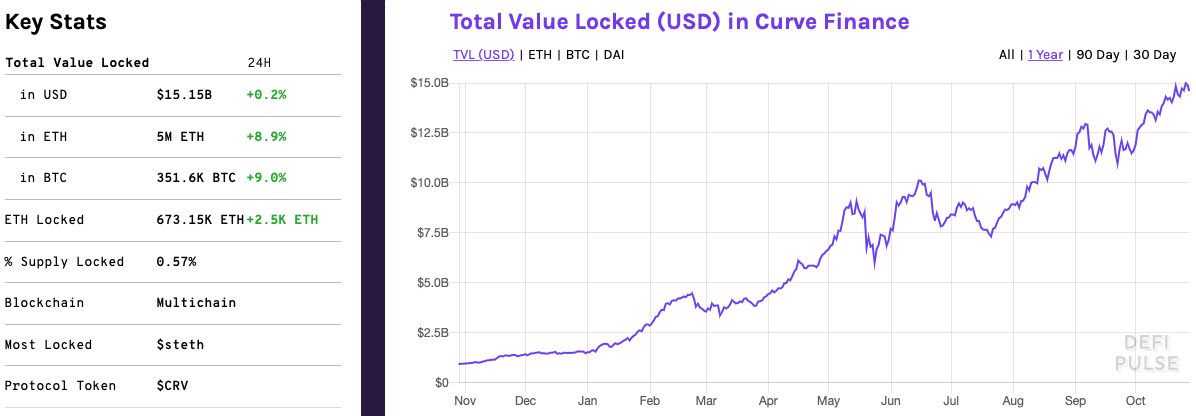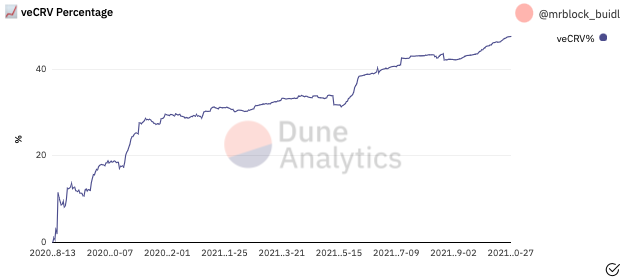Curve Finance (CRV) is a decentralized liquidity pool built on top of Ethereum, similar to Uniswap (UNI), but with a focus on the exchange of stablecoins. The main goals of Curve Finance are to facilitate extremely efficient trading, with low slippage and to provide a relatively low-risk and supplemental fee income for liquidity providers (LPs) without the risk of so-called impermanent loss — the opportunity cost of being an LP in volatile digital assets.
Despite the broader market sell off that occurred today, Curve has seen its TVL continue to expand as investors may be flocking to safety in stablecoins. The CRV governance token also trades at one of the lowest multiples when looking at the ratio of market capitalization-to-TVL, which currently sits at .09279.

Source: defipulse.com
Over the past 30-day period, the CRV token has traded up 57.52% to $4.36 as of reporting. Some industry experts believe that the price action seen in CRV could be viewed as a precursor to a resurgence in DeFi.
“Curve is the backbone for a lot of other protocols that are farming CRV. For instance, Yearn is an integral part of Curve because a lot of the vaults are farming CRV. When the price of CRV goes up, it creates this reflexive loop where the higher the price goes, the higher the yield, and thus attracts more capital to be deposited by users.” Santiago Santos, prominent Web3 investor told Blockworks. “One of the unique components of CRV is this mechanism where users can lock their CRV in exchange for a boost in yield, which adds to this reflexive feedback loop.”
The way trading fees are set and allocated is voted on by the Curve DAO, which currently sit at .04% on all pools. Half of those fees accrue to LPs, and the other half is awarded to vote-escrowed CRV (veCRV) holders.
The veCRV token gives its holders access to participate in three different activities that are not open to CRV holders alone. These include participating in the Curve DAO, earning protocol trading fees, and boosting staking rewards, according to Coinmonks’ Andrew Krohn.
Because veCRV is locked for a predetermined amount of time (up to 4 years), an increase in veCRV supply results in a reduction of liquid supply and thus puts upward pressure on the CRV price, as Santiago alluded to previously. Currently, 47.6% of the CRV supply is locked up as veCRV as seen in the graph below:

The rise of Convex Finance has also contributed to massive amounts of CRV being locked up for yield, with its TVL currently at $12.66 billion.
“So you have Curve itself, Convex (CVX), and then yield aggregating platforms like Yearn Finance (YFI) all working towards locking more of the CRV supply to increase user rewards (APY’s),” Joe DeTommaso, Investment Manager at CMS Holdings, told Blockworks.
As the supply of CRV becomes more illiquid the price goes up, yield aggregating platforms such as YFI see their APY’s increase, the fees generated and returned to token holders of the yield aggregators increases which in turn raises the price of the aggregators native tokens.
 blockworks.co
blockworks.co